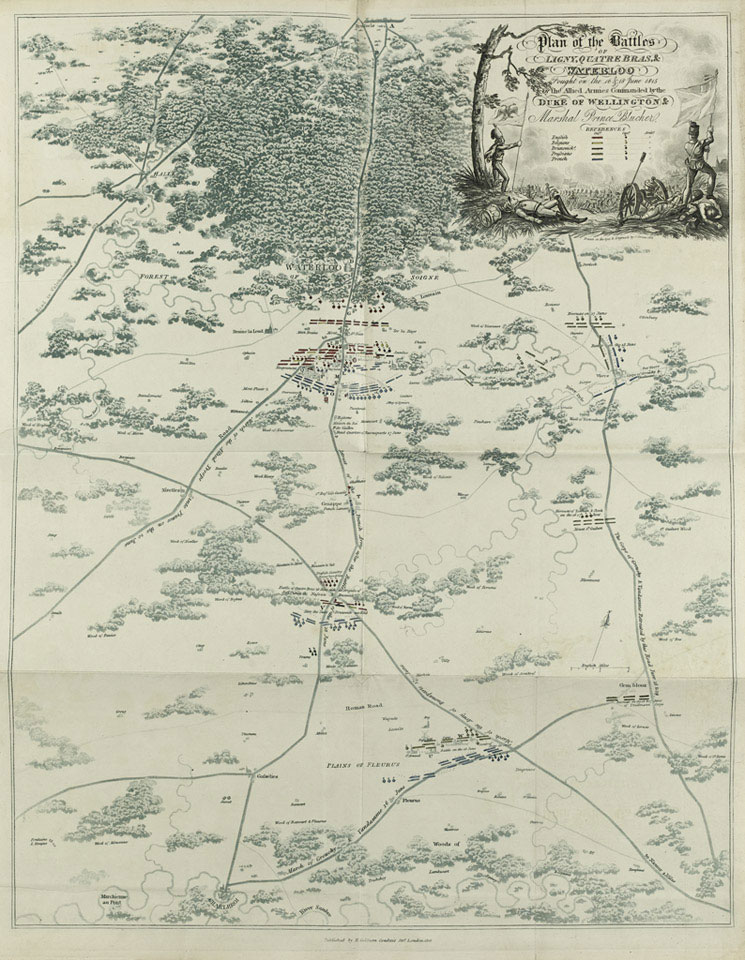
Online Collection
« Prev - 1 of 1 results - Next »
'Plan of the Battles of Ligny, Quatre Bras & Waterloo fought on the 16 and 18 June 1815 by the Allied armies commanded by the Duke of Wellington and Marshal Prince Blücher'
Map published by H Colburn, produced in conjunction with William Mudford's 'An Historical Account of the Campaign in the Netherlands (London, 1817).
On 15 June 1815 Napoleon Bonaparte crossed the River Sambre in the Netherlands in an attempt to drive a wedge between Wellington's Allied army and Blücher's Prussians. The following day at Ligny the main part of his army defeated the Prussians who were forced to retreat with losses of over 20,000 men. French casualties were only half that number.
That same day, Wellington beat off a French attack on the crossroads at Quatre Bras. However, the defeat of the Prussians at Ligny meant that he too had to retreat or risk being outflanked and overwhelmed. On 17 June, in pouring rain and pursued by Napoleon's main force, Wellington fell back to the ridge of Mont St Jean just south of the village of Waterloo.
Napoleon had detached Marshal Grouchy's 33,000 men to follow the Prussians, but he lost contact. Unknown to the French, the Prussians, although defeated, were still in decent shape. They were retreating, not eastwards along their lines of communication, but northwards towards Wavre. This meant that, instead of moving away from Wellington, the Prussians were able to keep in contact with him. Emboldened by Blucher's promise to send troops, Wellington resolved to stand and fight on 18 June until the Prussians could arrive.
The following morning Napoleon waited for the ground to dry before attacking, but the initial assaults of Reille's and D'Erlon's corps were repulsed. Repeated charges by French cavalry then failed to break the defensive squares of allied infantry. Only the capture of the farmhouse of La Haye Sainte threatened Wellington's position. By late afternoon the army of Prussian Marshal Blucher started arriving to reinforce Wellington.
Desperately, Bonaparte made a last throw to win the day. Across a field littered with dead and dying men, he launched the Imperial Guard. France's elite stormed towards the British but was overwhelmed by shattering musket fire. A general retreat began - the French Army was routed. Three days later the Emperor abdicated.
NAM Accession Number
NAM. 1971-02-33-546-1
Copyright/Ownership
National Army Museum, Out of Copyright
Location
National Army Museum, Study collection
Object URL
https://collection.nam.ac.uk/detail.php?acc=1971-02-33-546-1

